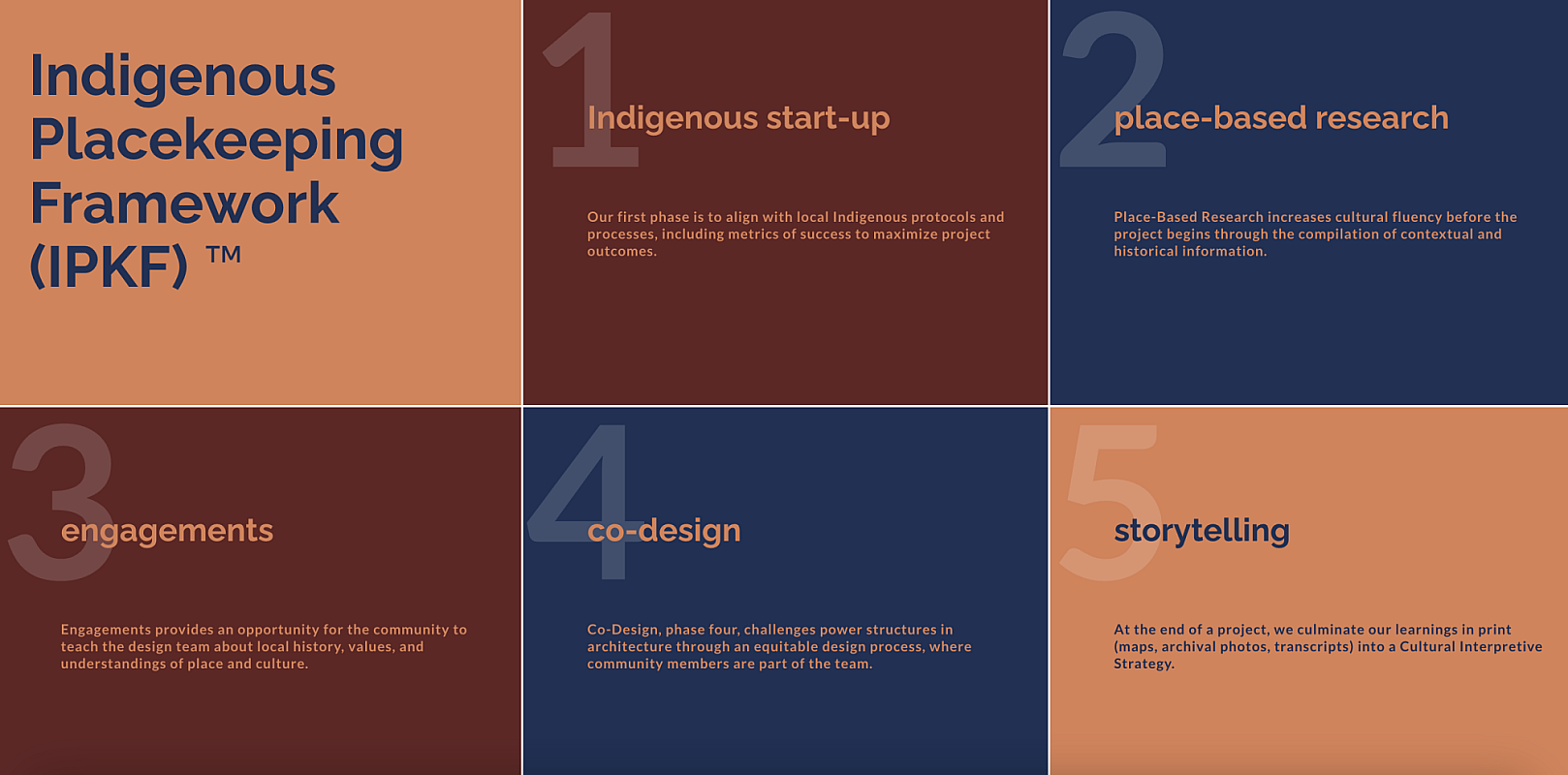Wanda Dalla Costa, the 1st, First Nations woman architect in Canada, shared her practice at an HML public event titled “Engaging Time and Tradition”. Dalla Costa and her firm TAWAW Architecture Collective have been co-designing with North American indigenous communities for nearly two decades by engaging the histories and traditions of Indigenous people in the lands on which they design.
“Design is this amazing vessel for understanding, for illuminating, for creating cross-cultural dialogue”
Dalla Costa calls her practice and projects “place-based creative ecologies”. Breaking the status quo, the projects begin with unique design phases “Indigenized Start-up”, place-based research, and community engagement. These phases produce community transcripts, cultural interpretive strategies, and design drivers that feed into a co-design process.
“A lot of the decisions we make are about reciprocity and cultural resilience, and then ecological sustainability is typically captured when we drive our project locally in terms of materials.”
Dalla Costa calls out the limitations and consequences of modernism in architecture, urging for a reevaluation of the role of tradition and a shift towards more contextually sensitive and culturally significant design approaches. She argues that modernism rejected tradition, causing a loss of meaningful material culture. As designers distanced themselves from accumulated knowledge, learning, and wisdom passed down through generations, several disciplines, including architecture, were significantly impacted. She believes broadly applicable design principles lead to a homogeneous application of design and technology that fail to consider the specific needs and characteristics of different places. Instead, she makes the case that designers need to consider local environmental factors and cultural uniqueness instead and shift towards place-based creative ecologies.
Dalla Costa describes her architectural practice as a “living process,” that alters with every project but is, “collaborative, plural, participatory, and distributive and builds on the interconnectedness of all life.”

This type of working offers a new ecological ethic, rooted in the care for all things. Dalla Costa says that interest in this type of participatory and historically-placed practice is growing, and it is happening at the same time as debates about dominant practices in architecture. This is creating a moment of “transition imaginaries” forged by “transition activists”.
“Through this work we are starting to tap into, and come into three of the biggest lessons: the Indigenous design triad of identity - lifeways - worldview.”
An example of their design method in practice is the Indigenous Peoples’ Space (IPS) project, located on Omamìwìnini Anishinaabeg and Algonquin Nation territory in Ottawa. This building sits across from the Parliament in Canada and symbolizes nation-to-nation relations and Indigenous self-determination. The feathers or snowshoe designs are personalized to each of the First Nations in Canada, to recognize the multitude of identities within the land. Within the project are gathering spaces, part of lifeway practices that create essential urban gathering areas. The fire pit represents truth and an opening of community, a symbolic gesture towards dialogue.


Dalla Costa concluded with the insight that within the field of design a reciprocal, historically rooted, and community-engaged way of designing broadens the toolbox and allows for more resilience.

Wanda Dalla Costa, AIA, FRAIC, LEED A.P. is a member of the Saddle Lake Cree Nation. Her firm, Tawaw Architecture Collective (www.TawArc.com) has offices in both Phoenix and Calgary. At Arizona State University, she is the director and founder of the Indigenous Design Collaborative. Her teaching and research are focused on Indigenous ways of knowing, co-design methodologies, and the resiliency of vernacular architectures. Dalla Costa received an Honorary Doctorate in 2023 from Athabasca University. In 2022, she was also recognized as an Honorary Fellow of the Royal Architecture Institute of Canada, and in 2019, she was recognized as a YBCA 100 recipient by the Yerba Buena Center for the Arts, a list that celebrates people, organizations, and movements shifting culture through ideas, their art, and their activism.
Read More
Join Our Academic Network
Get Access to our carefully researched and curated academic resources, including model syllabi and webinars. An email from an academic institution or a .edu email address is required. If your academic institution does not use .edu email addresses but you would like to join the network, please contact healthymaterialslab@newschool.edu.
Already have an account? Log in